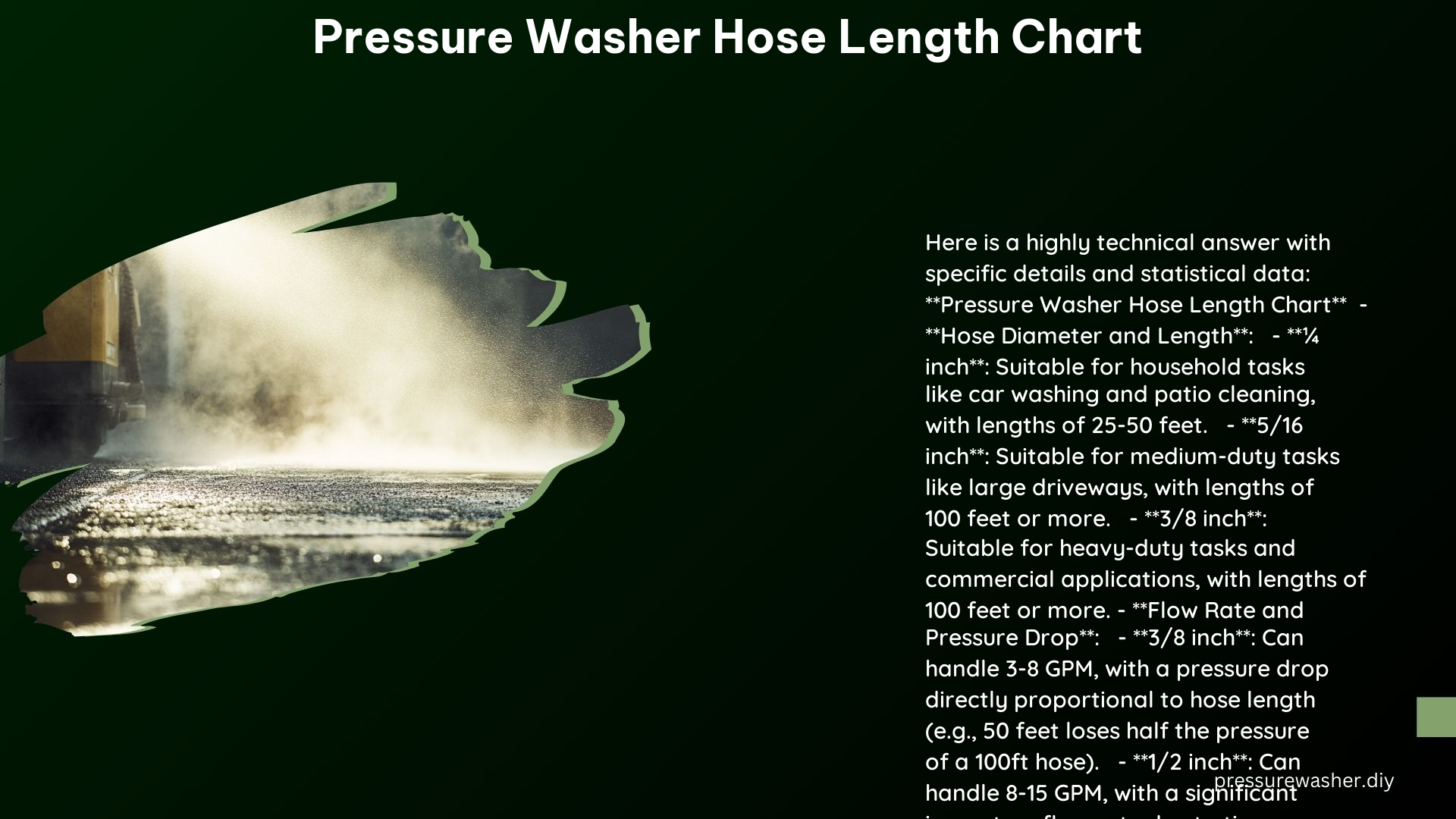When it comes to pressure washing, the length and diameter of the hose play a crucial role in determining the efficiency and effectiveness of the cleaning process. Understanding the relationship between hose length, diameter, water pressure, and flow rate is essential for achieving optimal performance. This comprehensive guide delves into the technical details of pressure washer hose length and diameter, providing you with a detailed analysis to make informed decisions for your pressure washing needs.
Hose Diameter and Flow Rate
The diameter of a pressure washer hose directly affects the flow rate of water. A larger hose diameter allows for a higher flow rate, but it may result in a reduction in water pressure. Here’s a breakdown of the common hose diameters and their corresponding flow rates:
- 1/4 inch Hose Diameter: Suitable for household tasks like car washing and patio cleaning, with a flow rate of around 3-8 gallons per minute (GPM).
- 5/16 inch Hose Diameter: Ideal for medium-duty tasks, with a flow rate of around 8-12 GPM.
- 3/8 inch Hose Diameter: Best for heavy-duty tasks and commercial applications, with a flow rate of around 12-15 GPM.
It’s important to note that the flow rate can also be influenced by factors such as the pressure washer’s pump capacity, the nozzle size, and the overall system configuration.
Hose Length and Pressure Drop

The length of a pressure washer hose affects the water pressure due to friction loss. The pressure drop across a given hose length is directly proportional to the length. This means that longer hoses will result in a greater pressure drop compared to shorter hoses. Consider the following examples:
- 50-foot Hose: Loses exactly half the pressure of a 100-foot hose.
- 100-foot Hose: Loses twice the pressure of a 50-foot hose.
The pressure drop can be calculated using the following formula:
Pressure Drop (PSI) = (Hose Length (ft) x Flow Rate (GPM) x Friction Factor) / (Hose Diameter (in)^2)
The friction factor is a constant that varies depending on the hose material and surface roughness. For a typical pressure washer hose, the friction factor is around 0.0017.
Practical Considerations for Longer Pressure Hoses
When using longer pressure hoses (100-200 feet), there are several practical considerations to keep in mind:
-
Flow Rate Reduction: Longer hoses reduce the flow rate due to increased friction and flow resistance. This can impact the cleaning efficiency and the ability to maintain the desired water pressure.
-
Pressure Drop: Longer hoses result in a greater pressure drop, which can significantly affect the cleaning performance. This may require adjusting the pressure washer’s settings or using a higher-powered model to compensate for the pressure loss.
-
Weight and Maneuverability: Longer hoses are heavier and more difficult to manage, especially when using a portable pressure washer. This can impact the ease of use and the ability to reach certain areas effectively.
-
Storage and Hookup: Longer hoses require more storage space and can be challenging to hook up, especially when using quick connects or couplers. Proper storage and handling techniques are essential to maintain the hose’s integrity and prevent kinks or damage.
Technical Specifications
To summarize the technical specifications for pressure washer hoses:
| Hose Diameter | Flow Rate (GPM) | Suitable Applications |
|---|---|---|
| 1/4 inch | 3-8 | Household tasks (car washing, patio cleaning) |
| 5/16 inch | 8-12 | Medium-duty tasks (driveways, sidewalks) |
| 3/8 inch | 12-15 | Heavy-duty tasks and commercial applications |
It’s important to consider the specific requirements of your pressure washing tasks, the capabilities of your pressure washer, and the practical limitations of longer hoses when selecting the appropriate hose length and diameter.
